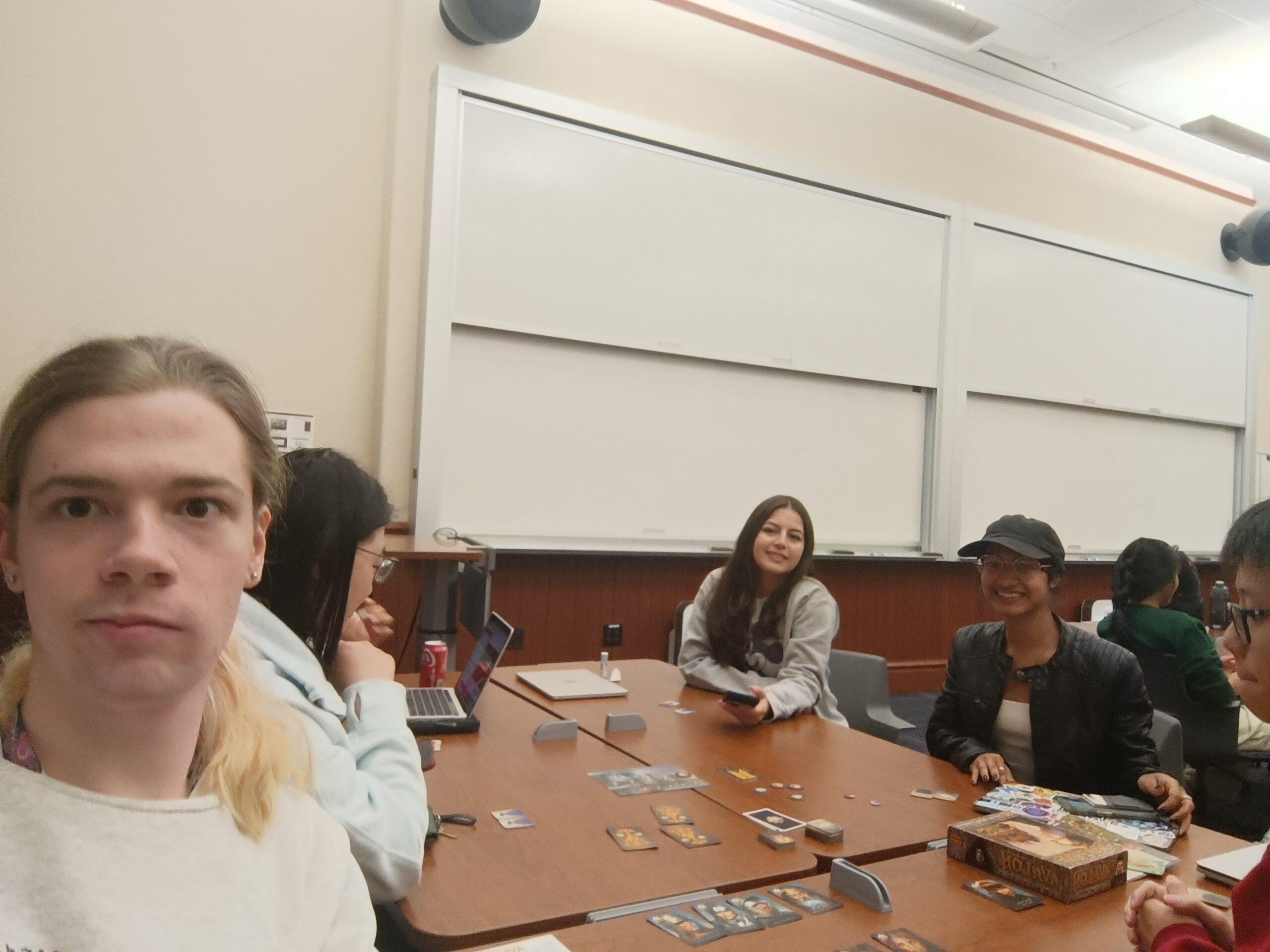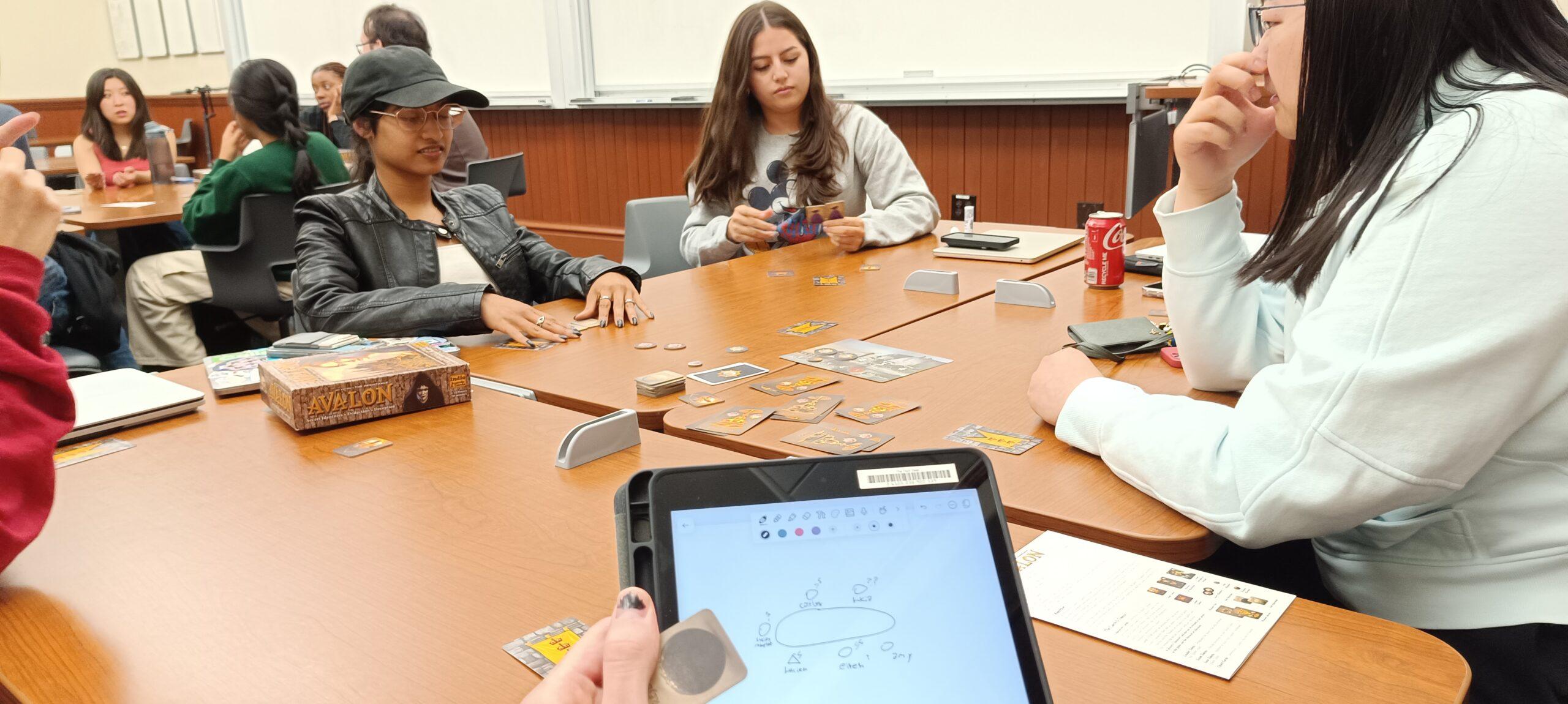For my critical play, I chose to play Avalon with six other players. Avalon is a hidden role board game designed by Don Eskridge with illustrations by Luis Francisco, George Patsouras, Nan Sumana, and Rafał Szyma. It is aimed at teen and up audiences interested in subterfuge and fantasy, as evidenced by its genre and Arthurian theme.
The game emphasizes social deduction by hiding players’ roles from each other, and by giving the players incomplete information to figure out each others’ identities. In other words, the games’ objectives are directly tied to making social deductions, in that it is almost entirely necessary to figure out identities to win. Furthermore, the game’s rules and procedures construct a framework within which such inference is the most natural way to play, by creating space for discussion and strategizing.
The primary difference that I identified between Avalon and other similar games in the genre that I have played, such as Werewolf or Town of Salem, is the absence of any sort of “death” or “out” mechanic. Every player was in the game until the end. I believe this was an excellent design choice on the part of the developers, as it allows all players to be consistently engaged and not have their enjoyment cut short unnecessarily. Broadening my comparisons, I have observed that video games which incorporate respawn timers or snowball mechanics tend to leave me feeling frustrated far more than games which allow players to have equivalent gameplay experiences no matter how well or poorly they are doing. I don’t think it’s an accident that the games which tend to do this right more consistently are party games, where the players will likely be friends, and therefore invested in avoiding having anybody coming away from the game feeling like a loser.
In terms of flaws, I feel like the game had some superfluous hardware in the form of voting tokens. A simple thumbs up or down would have sufficed, and while there was a certain appeal to the aesthetic experience of slapping down our votes all at once, it felt rather wasteful overall. Similarly, the token for tracking how many votes had failed in a row was so auxiliary that we ended up forgetting to even use it quite regularly. I see the value in preventing arguments when players forget what the game state is, but I suspect that this game could be played with only the cards, and no token or board at all, with very little value lost.
Looking at the game through an MDA lens, we can see that the aesthetic experience seems mostly guided by aspects of fellowship and expression, as players develop camaraderie and practice their skills of deception. Challenge and narrative can also be identified, as players pit themselves against the intellectual task of deducing identities, and write their own stories of each game as they create rivalries and build trust. For dynamics, we see the way that the game’s systems encourage players to lie, scheme, and pick apart each other’s statements, creating an aesthetic experience ripe for social deduction. I already covered this above, but I’ll reiterate the importance of the limited information provided to the players. Finally, in the realm of mechanics, we can observe core ideas of voting and choosing whether to sabotage quests. The prior creates space for discussion and debate, while the latter encourages strategic thinking and subterfuge.
Overall, I enjoyed my time with Avalon. I would say that my biggest takeaway with regards to improving my own design skills is the idea of making sure every player has roughly the same opportunity to have fun. This was the first hidden role game I’ve ever played where I got the powerless role with limited information two games in a row and didn’t feel at all like I missed out on anything important, because I was too busy having fun.




